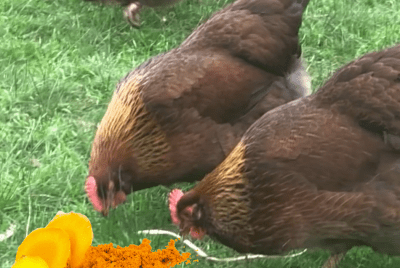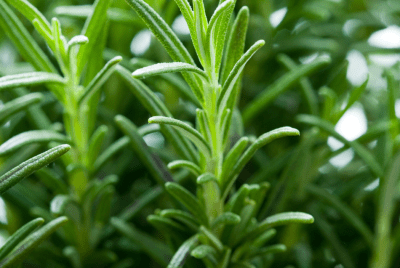Cheap Chicken Feed
Cheap Chicken Feed
1.Introduction: Creating Cheap Chicken Feed
By creating cheap chicken feed you can resolve the issue of the feed bill. There’s no denying that the cost of feeding your flock can quickly add up. However, with 17 innovative strategies, you can cut your chicken feed bill in half without sacrificing the quality of their diet.
1.1 Feeding chickens on a budget?
I’ve been there! 🐔 The trick is to get creative. The cheapest way to feed chickens and how I did it, I started by growing my own chicken-friendly plant. Think kale, sunflowers, and herbs like oregano and parsley. 🌿 I also use kitchen scraps ( nothing harmful like avocado, rhubarb leaves, onions etc) and forage for greens in the yard. Ever tried fermenting grains? It’s super easy and boosts nutrition, so your flock gets more from less! 🌾 And don’t forget to buy in bulk or hit up local farmers for cheaper feed options. Trust me, these little hacks saved me tons, and my chickens have never been happier! 💚 #BudgetChickenCare #FrugalFeeding #HappyHens
By the way chickens are NOT vegetarians. Chickens are natural omnivores and love their protein! 🐔 They’ll happily gobble up insects, worms, and even leftover meat scraps. In fact, offering them protein-rich treats like cooked meat, or fish can keep them healthy and active. They’re even known to enjoy chicken meat, so don’t be surprised if they go after it! (yes to the question can chickens eat chickens.) Just be sure it’s fresh and safe for them. Including a variety of protein sources in their diet mimics what they’d eat in the wild, making for happy, healthy hens that lay strong, nutritious eggs. 🥚 So go ahead, mix it up, and watch them thrive! The trick with meat is there is a fine line. If you give them a bit their egg production goes up, if you give them too much their egg production can go down.
If you would like a homemade chicken feed recipe click on this link it will take you to our chicken feed recipe article.

From creative cheap chicken feed mixtures to resourceful foraging opportunities, these tips will not only help you save money but also ensure your chickens are happy and healthy. Let’s probe these cost-effective solutions to feed your feathered friends without breaking the bank!
1.2. Key Takeaways:
- Rotate Feeding Methods: Experiment with various feeding methods like free-ranging, using smaller feeders, and providing foraging opportunities to reduce feed consumption.
- Grow Your Own Feed: Planting a chicken-friendly garden with crops like sunflowers, comfrey, and grains can help offset the cost of commercial feed.
- Utilize Leftovers: Supplement your chicken’s diet with kitchen scraps, leftovers, or expired produce to reduce the amount of feed needed.
- Barter for Feed: Consider bartering with local farmers or gardeners for surplus produce or grains that can be used to feed your chickens.
- Implement Sustainable Practices: Employ sustainable practices like composting, vermiculture, or raising insects to create nutritious feed alternatives for your chickens.
2. Bulk Buying and Storage Strategies
2.1. Purchasing Feed in Bulk
One great way to slash your chicken feed bill is by purchasing feed in bulk. When you buy in larger quantities, you can often get a discount per pound, which can add up to significant savings over time. Look for local farmers or co-ops that offer bulk discounts, or consider splitting a large order with other chicken keepers in your area to take advantage of wholesale prices.
2.2. Proper Storage Solutions
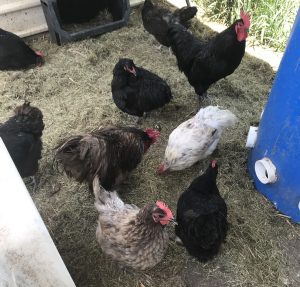
One key to maximizing your savings on chicken feed is proper storage. Make sure your feed is stored in a cool, dry place to prevent mold growth and pest infestations. Investing in airtight containers or metal bins can help keep your feed fresh and free from contamination. I bought huge plastic 200 litre (50 gallon) drums that had previously contained food and stored my feed in the drums.
Being a breeder with over 22 breeds I didn’t want to be putting out chicken feed every day as there was much to do. I put a 50 gallon drum in each enclosure with 90 degree plummers elbows down the bottom. You can use any size feeder that suits you. (See the picture below).
2.3. Making Your Own Feeder
Relatively easy to do depending on how handy you are with a drill. Buy a large round drill piece (like the yellow one in the picture below) the diameter or size of your plummers elbow and drill your hole. Then you try the plummers elbow to see if it fits. It must be 90 degrees i tried all the different angles the others all gave me trouble. Glue it in place with a silicone glue (in a tube with a nozzle) inside and out. Leave it to sit for 24 hours (thats the hardest part because you want to try it out as soon as its done.)
After 24 hours touch the glue to make sure its completely set if not leave for longer. If it is set you are ready to fill the bin with feed. I used to put 6-7 sacks in the feeder to fill it up. Put one of these feeders in all your enclosures under cover. I also put a piece of marine ply over the top. This way you can scrape all the chicken poop off the top and it doesn’t get on your lid that you have to remove when you restock the feed. I always bought as many materials as i could second hand. If you are not in a hurry for anything, you can save a fortune. You can put caps over these feeding stations to encourage your chickens to go out and forage during the day. They usually like to do this anyway but if they need encouragement you can try this.
You can also order the whole kit below and have the fun and satisfaction of creating your own perfect feeder.
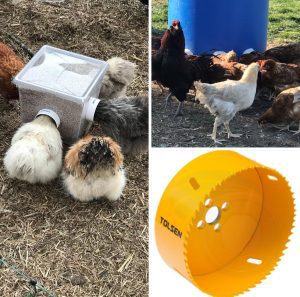
2.4. Check Feed Regularly
Be sure to check regularly for any signs of spoilage or infestation and discard any compromised feed immediately. This is why I place these feeders under a roof so when it rains there is no chance of water getting in the feed. I would also often put bricks or blocks of wood underneath the feeders so the mice could not get in.
To further protect your feed, consider storing it off the ground to prevent moisture from seeping in. I never stored my feed in sacks always in drum so I did not have this problem. These big drums are great for so many things. You can also rotate your stock, using older feed first to ensure nothing goes to waste. By implementing proper storage solutions, you can extend the shelf life of your feed and save money in the long run.
Label the containers with the purchase date and type of feed inside to keep track of inventory. and ensure you are using the oldest feed first. Properly storing your chicken feed is vital to maintaining its quality & nutritional value, helping you keep your flock happy and healthy while cutting costs.
3. Alternative Feed Options
3.1. Kitchen Scraps and Leftovers
Alternative to traditional chicken feed, kitchen scraps and leftovers can be a great way to reduce your feeding costs. Leftover fruits, vegetables, grains, and even small amounts of meat can be fed to your chickens, giving them a varied diet while cutting down on waste.
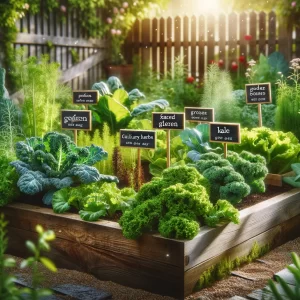
3.2. Cultivating a Chicken Garden
Kitchen gardens can be a rich source of nutritious feed for your chickens. Planting items such as kale, sunflowers, and herbs can provide fresh greens, seeds, and insects for your flock. Not only will this reduce your feed bill, but it also allows your chickens to forage, promoting natural behaviors and overall health.
You can incororate the food for your chickens into your own crop or have a separate corner of the garden to grow the crop for you chickens. Do it it how ever it works best for you. Either way the chickens will benefit from such nutritious food.
Options for your chicken garden include planting a variety of nutrient-rich plants like clover, alfalfa, and comfrey. These plants not only provide valuable nutrients but also attract insects that can serve as protein-rich snacks for your chickens. Additionally, consider planting marigolds and nasturtiums to repel PESTS naturally.

4. Feed Management
4.1. Optimizing Feeding Times
Many poultry owners overlook the importance of timing when it comes to feeding their chickens. To maximize feed efficiency, establish a consistent feeding schedule for food scraps and treats. Chickens will learn when to expect food, reducing wastage from uneaten feed sitting out for too long. This practice also helps in monitoring their appetite and overall health.
4.2. Portion Control and Feed Waste Reduction
With proper portion control, you can significantly reduce your feed expenses and cut wastage. Offering just the right amount of feed ensures that your chickens consume what they need without excess. Additionally, using feeders designed to minimize spillage and spoilage can further prevent unnecessary waste. Monitor constantly how much you give them. watch how much they eat – if you give them sunflower seed heads or the cobs of corn. Don’t have leftovers lying around it attracts vermin. I have had cats that don’t interfer with the chickens but lie in wait in the shadows at night to catch the mice coming for a free feed.
Waste: While chickens have a knack for scratching and tossing feed around, implementing strategies such as using elevated feeders or feeding on a clean surface can help minimize spillage. Regularly cleaning feeders and the feeding area can also prevent the spread of bacteria and mold, ensuring your flock stays healthy.
5. Health, Nutrition, and Feed Efficiency
5.1. Understanding Chicken Nutrition
Feed plays a crucial role in the health and productivity of your flock. Understanding the nutritional needs of chickens is crucial for maximizing feed efficiency and keeping your birds healthy. A balanced diet should include protein, carbohydrates, fats, vitamins, and minerals to support growth, egg production, and overall well-being.

5.2. Supplements and Natural Additives
Chicken supplements and natural additives can be beneficial for boosting the health and immunity of your flock. Adding key vitamins and minerals can help fill any nutritional gaps in their diet, while natural herbs and probiotics can support digestion and promote a healthy gut microbiome. By incorporating these supplements, you can enhance the overall health of your chickens and improve feed efficiency.
Adding supplements and natural additives to your chicken feed can provide numerous benefits for your flock. Probiotics can improve gut health and immune function, while herbs like oregano have antimicrobial properties that can help prevent diseases. Additionally, omega-3 fatty acids from sources like flaxseed can boost egg quality and overall health.
6. DIY Feed and Treats
Making Your Own Cheap Chicken Feed
All chicken keepers know that feed costs can quickly add up. One way to cut down on expenses is by making your own chicken feed. You can create a healthy and balanced mix of grains, seeds, and supplements tailored to your flock’s specific needs. Not only can this save you money, but it also ensures you know exactly what your chickens are eating. Follow this link for a recipe for nutritious Homemade Chicken Feed
6.1. Homemade Treats for Nutritional Boosts

To give your chickens an extra nutritional boost and keep them happy, consider making homemade treats. These treats can include kitchen scraps, vegetables, fruits, grains, or even mealworms. Not only are these treats a great way to supplement your chickens’ diet, but they also provide mental stimulation and prevent boredom in your flock.
This extra care can lead to healthier and happier chickens overall. However, it’s important to remember that these treats should be given in moderation to avoid any digestive issues. Monitor your flock’s reaction to different treats and adjust accordingly.
7. Leveraging Natural Resources
7.1. Free-Range Advantages to get Cheap Chicken Feed
Now, one of the most effective ways to slash your chicken feed bill is by letting your flock free-range. Not only does this provide your chickens with access to natural food sources like insects, worms, and vegetation, but it also promotes healthier and happier chickens. Free-ranging can significantly reduce your feed costs while improving the quality of your eggs and meat.
7.2. Incorporating Insects and Grubs
Resources. Leveraging natural resources like insects and grubs can be a game-changer for cutting down your chicken feed expenses. By allowing your chickens to forage for insects and grubs, you are not only providing them with a nutrient-rich diet, but you are also reducing your reliance on commercial feed. This natural food source can supplement their diet and keep your flock healthy and strong.
Plus, incorporating insects and grubs into your chickens’ diet can also help control pests in your garden or yard, creating a natural balance in your ecosystem. By encouraging your chickens to hunt for insects, you are not only saving money on feed but also contributing to a more sustainable and self-sufficient way of raising chickens.
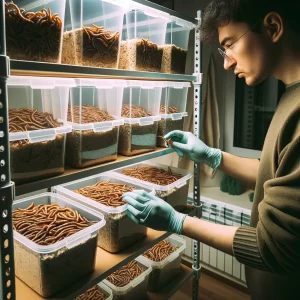
8. Community and Networking
8.1. Joining a Poultry Club or Co-op
With so many like-minded chicken enthusiasts in one place, joining a poultry club or co-op can be incredibly beneficial for reducing your chicken feed bill. Members often share tips, resources, and even bulk purchases of feed, which can significantly lower your costs while providing a supportive community to learn from.
8.2. Bartering and Sharing Resources with Neighbors about cheap chicken feed
Poultry owners can benefit greatly from bartering and sharing resources with neighbors. By trading surplus eggs, sharing bulk feed purchases, or even taking turns caring for each other’s flocks during vacations, you can cut down on expenses and build strong relationships within your community.
Bartering and sharing resources with neighbors can help you save money, build friendships, and create a support system for your poultry endeavors.
8.3. Chicken Feed for Egg Laying Hens
If this process seems too daunting for you or if cost is not an issue click on the link below and buy some chicken feed for egg laying hens. (Chicken Layer feed 50lbs)
9. Summing up Cheap Chicken Feed
To wrap up, implementing the 17 ways to slash your chicken feed bill by 50% can significantly reduce your expenses and improve the health of your flock. By focusing on cost-effective feed options, proper storage, and minimizing waste, you can ensure that your chickens are well-fed without breaking the bank. So why wait? Start saving money on your chicken feed bill today and reap the benefits of a happy and healthy flock!
FAQ’s about Cheap Chicken Feed
1: What is Cheap Chicken Feed about?
A: Ceap chicken feed is a comprehensive guide that provides you with practical tips and strategies to reduce your chicken feed expenses by half.
2: Is this guide about cheap chicken feed suitable for beginners?
A: Yes, this guide is designed to be beginner-friendly and easy to understand. Whether you are new to raising chickens or have been doing it for a while, you will find valuable insights to help you cut down on feed costs.
3: Are the tips provided in the Cheap Chicken Feed guide practical and easy to implement?
A: Absolutely! The guide offers simple and effective ways to reduce your chicken feed bill without compromising the health and well-being of your flock. You can start implementing these strategies right away.
4: Will following the tips in the Cheap Chicken Feed guide impact the quality of nutrition provided to my chickens?
A: Not at all. The guide focuses on smart and efficient ways to manage your chicken feed expenses while ensuring that your birds receive the necessary nutrients for optimal health and productivity. Your chickens will continue to thrive with the suggested cost-saving measures.
5: Where can I access ’17 Ways to Slash Your Chicken Feed Bill By 50%’?
A: You can easily get your hands the info by reading our article Cheap Chicken Feed and implementing some of our strategies today. Start saving on your chicken feed costs today!













